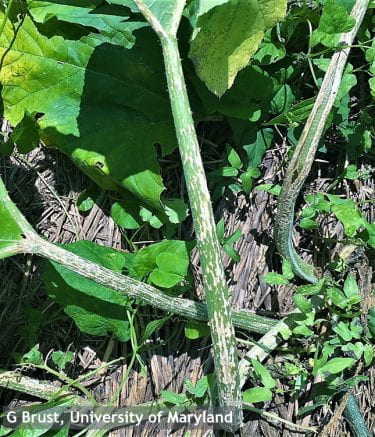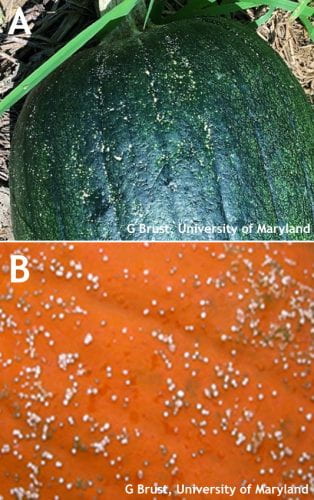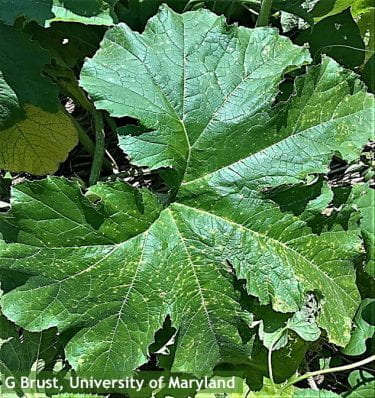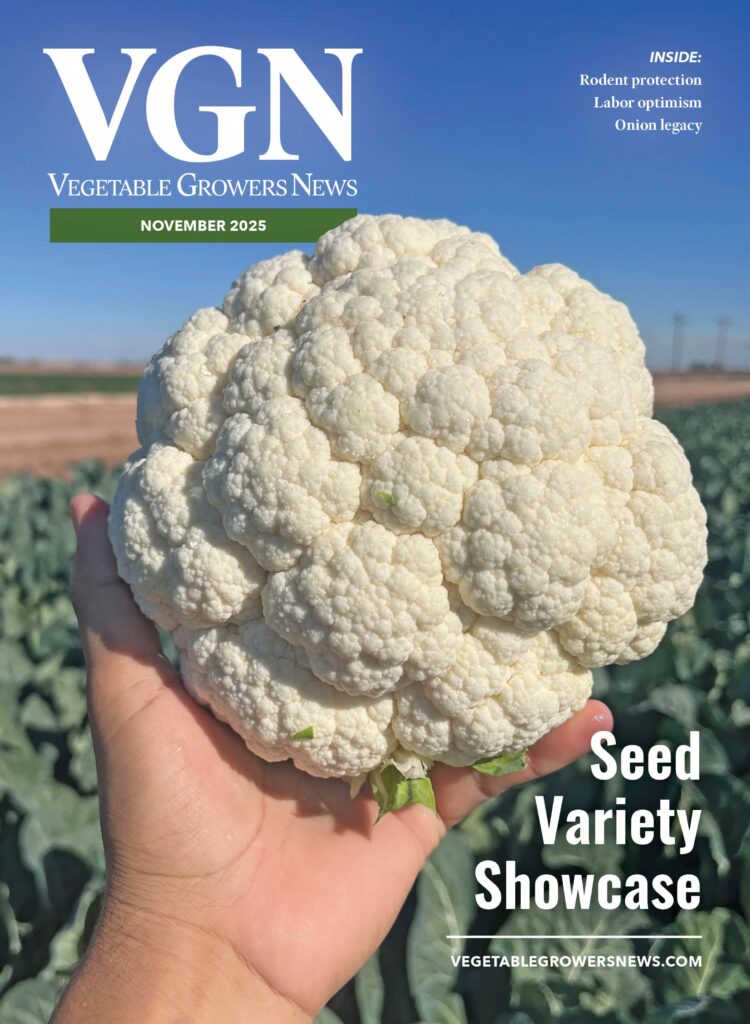Aug 30, 2021Plectosporium blight in some pumpkin fields seen again this year
I am seeing some plectosporium blight in a few pumpkin fields this year, not as bad as last year but still there.
This disease will probably increase if we continue having frequent rains in some locations. This fungal disease of pumpkin, zucchini and squash can cause yield loss if left uncontrolled. Plectosporium blight prefers warm, humid or rainy weather conditions. It overwinters on crop residue and can persist in the soil for several years.
Plectosporium blight can be recognized from the small white to light tan spots on leaves (Fig. 1 at top) and elongated lesions on stems and leaf petioles (Fig. 2). On green fruit the lesions are very small white to tan flecks (Fig. 3a) on more mature fruit the lesions are round to irregular shaped pimples on the surface of the pumpkin that often makes them unmarketable (Fig. 3b).
These fruit lesions also allow soft rot pathogens to penetrate into the pumpkin that will cause the fruit to ‘melt-down’ into a deflated mess. When stem and foliar lesions occur in large numbers they can give a light gray or white appearance to the foliage. As the lesions increase in numbers and merge they turn the vines and leaf petioles white (Fig. 2). Severely infected pumpkin stems or petioles will become brittle and can split or shatter if disturbed (Fig. 2).

Figure 2. Plectosporium on pumpkin leaf petioles-the petiole to the far right has split.
When Plectosporium blight occurs, rotate away from summer squash and pumpkins for 2 years. Scout for disease and apply fungicides when disease first occurs. Thorough coverage of foliage, vines, and fruit is necessary for good control.
Most of the time a protective spray of chlorothalonil or mancozeb will give you good protection from this disease, however in years like this one where some of us have had frequent heavy rains the disease control needs a boost with the addition to the protective sprays of using something in rotation such as Cabrio or Flint Extra.

Figure 3. Plectosporium lesions on green fruit (A) and on orange fruit (B)
– Jerry Brust, IPM Vegetable Specialist, University of Maryland
Figure 1 at top. Plectosporium yellow-tan spots (lesions) on pumpkin leaf.

















